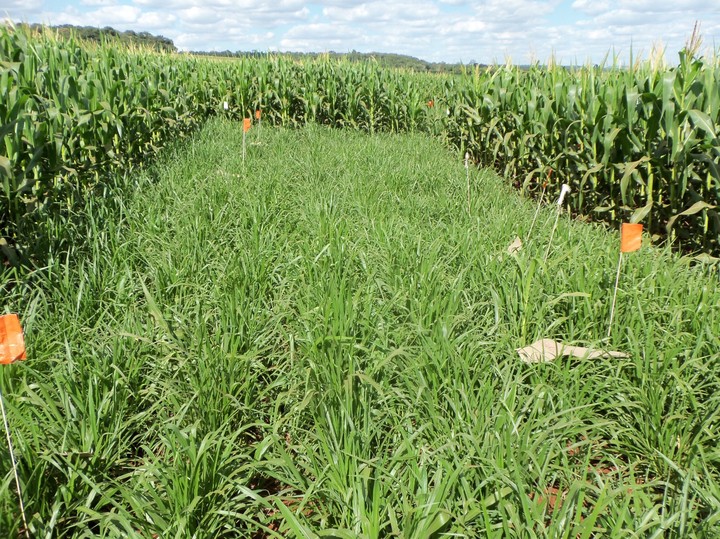Nitrogen recovery efficiency for corn intercropped with palisade grass
 Image credit:(Danyllo Dias)
Image credit:(Danyllo Dias)
Abstract
Intercropping corn and palisade grass is a technique to increase straw production, soil C contents, nutrient cycling and crop yield. However, concerns arise from nitrogen (N) uptake by the intercropping crop causing reduction in the yield of the corn. Our objective was to evaluate N recovery efficiency (NRE), and the N dynamics in the soil-plant system in corn intercropped with palisade grass. A field trial was carried out in Bahia, Brazil, evaluating two cropping systems (i.e.) corn (monoculture) and corn intercropped with palisade grass sowed between rows on the same day as the corn crop, with four replicates in a completely randomized block design. Nitrogen (150 kg/ha of15 N-urea) was applied at sowing to determine NRE, which means the amounts of N-fertilizer uptake in corn and palisade grass, the amounts of N-fertilizer in soil and the 15N-fertilizer balance. Neither the NRE (63.3% in monoculture and 57.2% in intercropping) nor corn grain yield (9,800 kg/ha in monoculture and 9,671 kg/ha in intercropping) was affected by intercropping, which accumulated only 2.1 kg/ha of N-fertilizer or 1.4% N rate. In addition, palisade grass yielded 2,265 kg/ha of dry matter. The balance indicated that 82.4% of N-fertilizer was recovered in the monoculture and 86.9% in the intercropping. Intercropping palisade grass does not affect grain yield or N corn nutrition and has the potential to increase straw production contributing to maintenance of no-till.